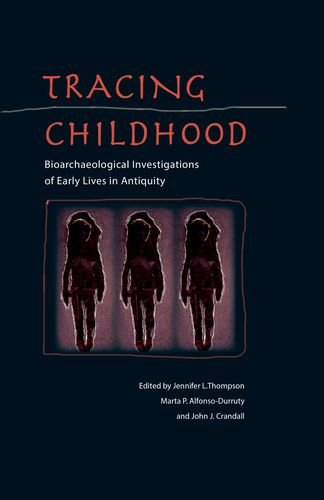

Most ebook files are in PDF format, so you can easily read them using various software such as Foxit Reader or directly on the Google Chrome browser.
Some ebook files are released by publishers in other formats such as .awz, .mobi, .epub, .fb2, etc. You may need to install specific software to read these formats on mobile/PC, such as Calibre.
Please read the tutorial at this link: https://ebookbell.com/faq
We offer FREE conversion to the popular formats you request; however, this may take some time. Therefore, right after payment, please email us, and we will try to provide the service as quickly as possible.
For some exceptional file formats or broken links (if any), please refrain from opening any disputes. Instead, email us first, and we will try to assist within a maximum of 6 hours.
EbookBell Team

4.7
36 reviews“A richly integrative, masterful biocultural approach to childhood in the past, in which social science theory and historical, archaeological, and ethnographic details converse with quantitative paleopathology and demography. These studies are an excellent inauguration of a field of study concerned with humanizing the skeletons of a universally vulnerable, resilient, and transcendent class of people.”—Michael Blakey, The College of William and Mary
“A refreshing and well-timed volume. Combines archaeological, historical, social, and paleopathological evidence and demonstrates the merits of this approach in defining the lives of children in the past.”—Mary E. Lewis, author of The Bioarchaeology of Children
“Integrates cultural and biological information to interpret the lived experiences of children. The cross-cultural and temporal depth of the chapters in this volume contribute significantly to understanding children and their contribution to past societies.”—Brenda Baker, coauthor of The Osteology of Infants and Children
Bioarchaeological studies of children have, until recently, centered on population data–driven topics like mortality rates and growth and morbidity patterns. This volume examines emerging issues in childhood studies, looking at historic and prehistoric contexts and framing questions about the nature and quality of children’s lives. How did they develop their social identity? Were they economic actors in early civilizations? Does their health reflect that of the larger community?
Children’s lives differ significantly from those of adults due to disparate social identities and variable growth needs. Comparing field research from a variety of sites across Europe and the Americas, the contributors to this volume demonstrate that children not only have unique experiences but also share, cross-culturally, in daily struggles. In some of the cases presented, this is the first time that child remains have been examined in any detail, making Tracing Childhood an essential resource for scholars and researchers in this growing field.